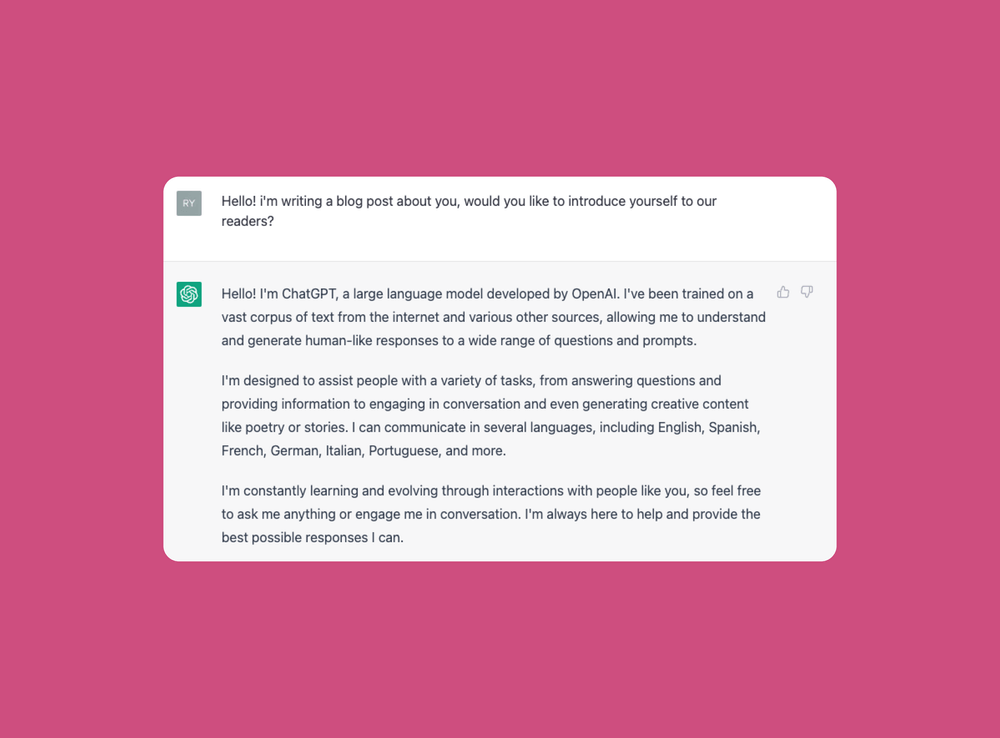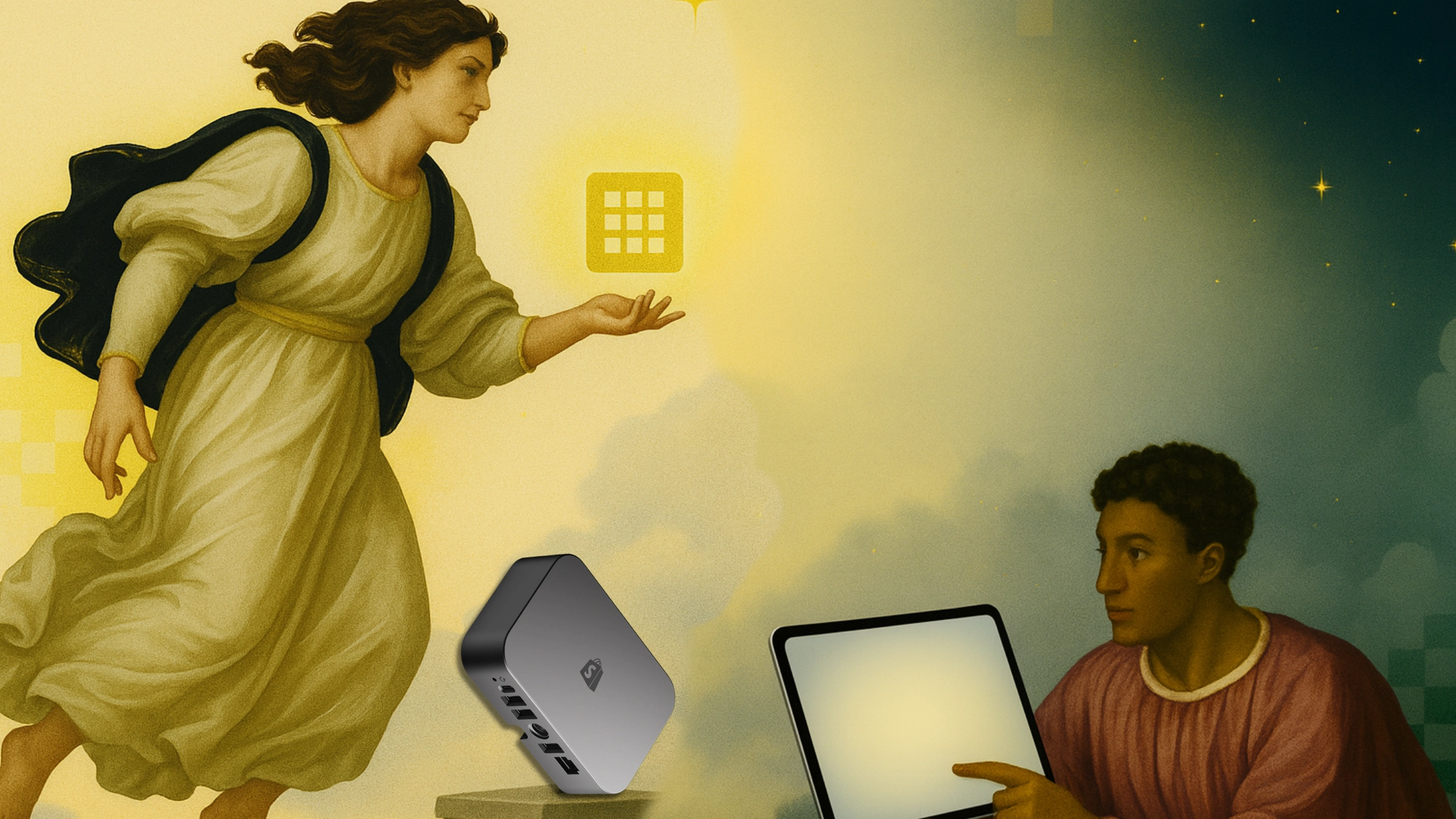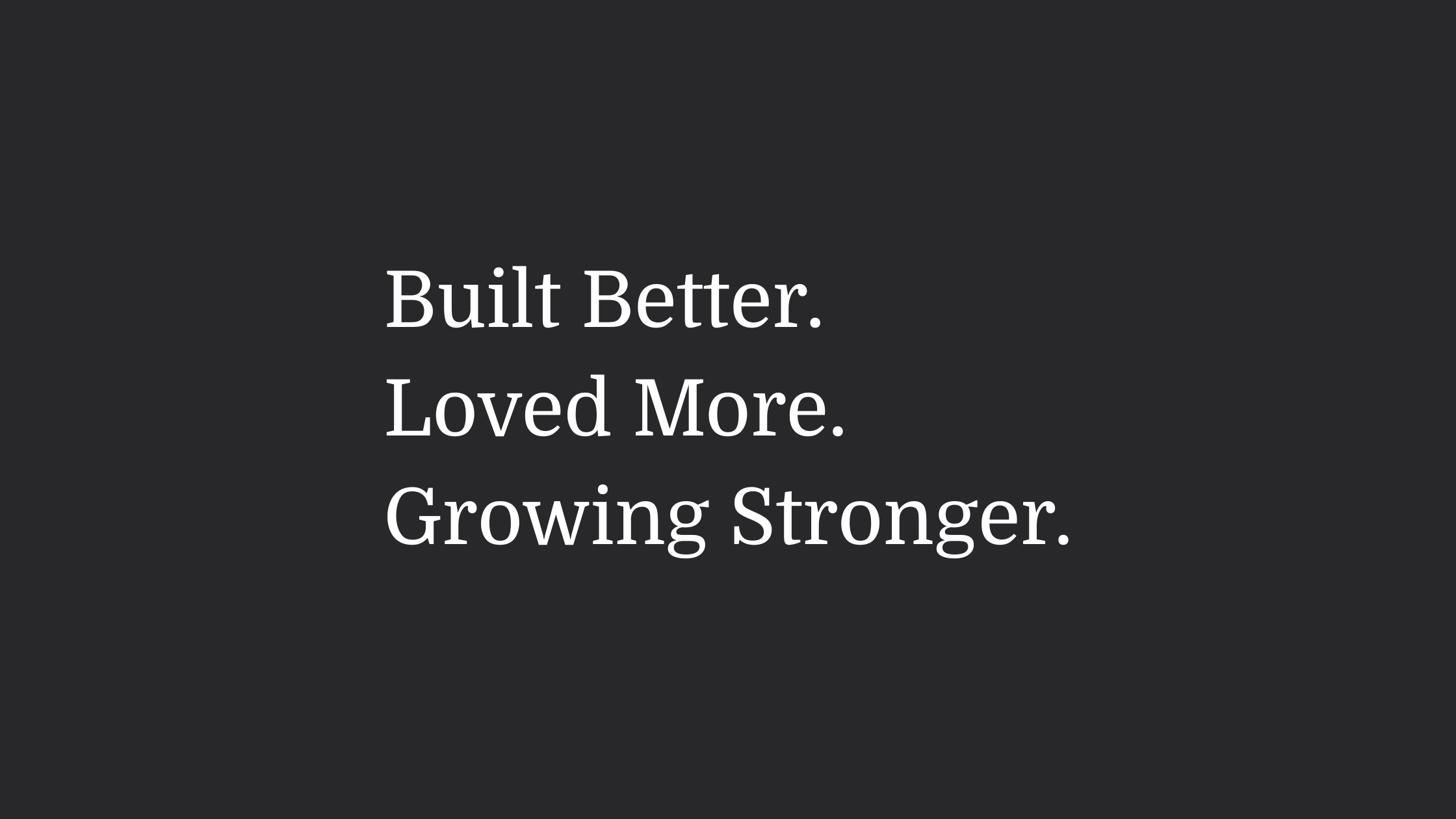Interview multiple candidates
Lorem ipsum dolor sit amet, consectetur adipiscing elit proin mi pellentesque lorem turpis feugiat non sed sed sed aliquam lectus sodales gravida turpis maassa odio faucibus accumsan turpis nulla tellus purus ut cursus lorem in pellentesque risus turpis eget quam eu nunc sed diam.
Search for the right experience
Lorem ipsum dolor sit amet, consectetur adipiscing elit proin mi pellentesque lorem turpis feugiat non sed sed sed aliquam lectus sodales gravida turpis maassa odio.
- Lorem ipsum dolor sit amet, consectetur adipiscing elit.
- Porttitor nibh est vulputate vitae sem vitae.
- Netus vestibulum dignissim scelerisque vitae.
- Amet tellus nisl risus lorem vulputate velit eget.
Ask for past work examples & results
Lorem ipsum dolor sit amet, consectetur adipiscing elit consectetur in proin mattis enim posuere maecenas non magna mauris, feugiat montes, porttitor eget nulla id id.
- Lorem ipsum dolor sit amet, consectetur adipiscing elit.
- Netus vestibulum dignissim scelerisque vitae.
- Porttitor nibh est vulputate vitae sem vitae.
- Amet tellus nisl risus lorem vulputate velit eget.
Vet candidates & ask for past references before hiring
Lorem ipsum dolor sit amet, consectetur adipiscing elit ut suspendisse convallis enim tincidunt nunc condimentum facilisi accumsan tempor donec dolor malesuada vestibulum in sed sed morbi accumsan tristique turpis vivamus non velit euismod.
“Lorem ipsum dolor sit amet, consectetur adipiscing elit nunc gravida purus urna, ipsum eu morbi in enim”
Once you hire them, give them access for all tools & resources for success
Lorem ipsum dolor sit amet, consectetur adipiscing elit ut suspendisse convallis enim tincidunt nunc condimentum facilisi accumsan tempor donec dolor malesuada vestibulum in sed sed morbi accumsan tristique turpis vivamus non velit euismod.
If you haven’t yet heard of ChatGPT, it’s likely you’ve either been living under a rock - or you haven't gone on LinkedIn this year. It’s hard to miss, with the popularity of this AI (Artificial Intelligence) tool skyrocketing over the last few months.
Perhaps the most visceral example of AI in use today, this tool’s sometimes uncanny human-like ability to respond to random questions, tell jokes, and even write love letters, has taken the world by storm, with plenty of people (and brands) sitting up and taking notice.
But how can you use ChatGPT for your own content marketing? And is it REALLY better than humans at writing? ChatGPT's responses vary vastly depending on the prompts it's given. Here we'll explore how you can shape prompts for your brand to get the most out of your friendly neighbourhood chatbot.
First, How Does ChatGPT Work?
Get set for a momentary jargon overload.
ChatGPT is a conversational app that uses OpenAI's GPT-3 (Generative Pre-trained Transformer 3) language model to generate text in response to user input. The GPT-3 model is a neural network (a computer program that functions much like human thought processes) that uses a large number of parameters, or variables, to predict what text should come next based on the input it receives. It processes input in the form of “semantic tokens”, which are representations of words or phrases that capture the meaning of the input.
The neural network behind GPT-3 has a multitude of layers and has been trained on a vast amount of written content, including websites, books, news articles, and other text. This extensive training allows it to generate material that is sometimes meaningful, relevant, and coherent in response to a wide range of prompts.
When using ChatGPT for yourself, you can have a conversation with the model as if it were an actual living, breathing human being. The model processes your input and generates a response that is intended to continue the conversation in a natural and meaningful way.
If that’s left you even more confused, don’t worry. While it helps to understand how it works, we’ll now show you some examples of how to put it to use, and also, how not to put it to use.
Using ChatGPT For SEO
ChatGPT’s results may be hit or miss when asked to generate something entirely new. Creating things from scratch certainly isn’t its forte, and it often struggles to produce something of substance with the kind of emotive punch only a human can deliver (as you’ll soon discover).
Where ChatGPT truly comes into its own is in summarising text. It's a reliable option when you need to condense a large amount of information into a concise summary. This makes it a fantastic tool for three tedious letters: SEO.
SEO, or Search Engine Optimisation, is vital for boosting your presence online, but from a writer’s perspective it’s certainly not the most riveting task. Search optimised copy is designed to be read by a machine; for search engines to find those all-important keywords as they decide where to place a webpage in the rankings. So why not get the machines to write it, too?
Let’s start with a familiar brand. Here, we give ChatGPT a very simple prompt:
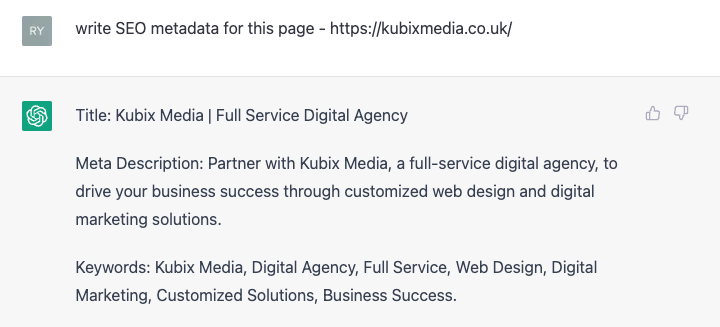
An admirable attempt, but one lacking in context, and missing many of the leading keywords that can drive traffic to the Kubix website. For example, it doesn’t mention anything about our Shopify expertise, e-commerce, online stores, brands, or website building. Oh, and it uses American spellings.
This is where the human comes in. ChatGPT needs you to be very specific about the keywords you’d like it to include in your descriptions. Using an SEO tool like Semrush, you can uncover your top keywords, and assemble them in a list for ChatGPT to put to use.
This time, we tried asking for the same content, with an included list of keywords:
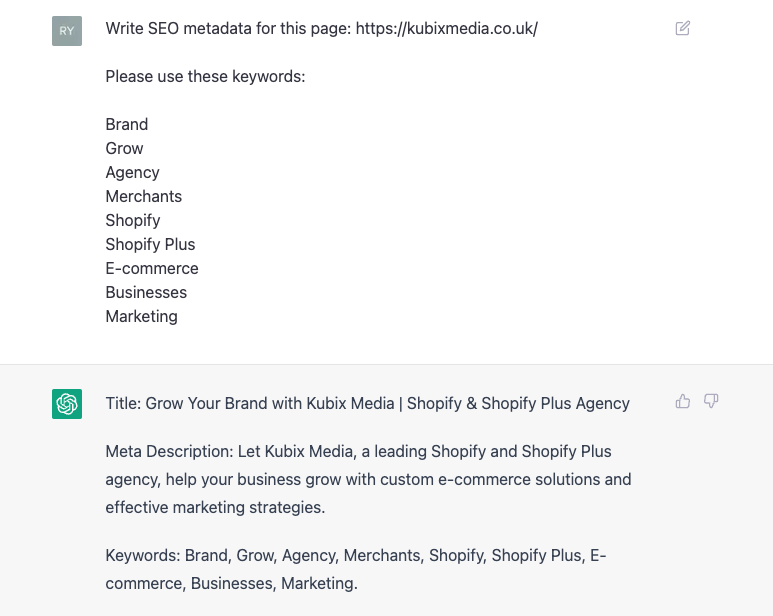
Now we're talking. This second attempt mentions important context like "Shopify Plus Agency" and "e-commerce solutions". Whilst neither is going to win a Nobel Prize for Literature anytime soon, this is much more specific than "full service digital agency
We’ve only used our own website as an example - you can adapt these prompts to your brand too, no matter what kind of products or services you sell.
Using ChatGPT For Online Store Content
ChatGPT can be a valuable asset in the brainstorming process. It's like having an extra collaborator who can help you develop ideas and phrases, even if they're not the most knowledgeable expert. While accuracy may not always be guaranteed, ChatGPT can generate some basic copy for those times you’re facing writer’s block.
Here we’ve asked ChatGPT to create some headlines for a homepage banner for a dining table retailer:
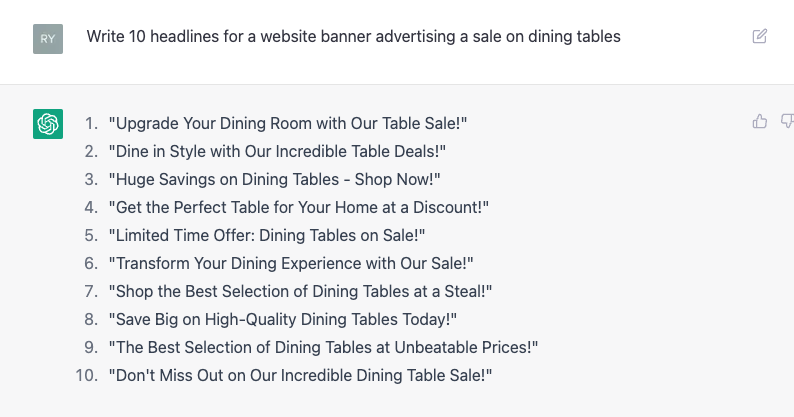
Again, a good attempt, but as any good copywriter would be able to tell you, it’s more than a little generic. And in this case at least, ChatGPT seems to be addicted to exclamation marks.
Specificity is once again key. What we didn’t tell you (or the chatbot) is that this imaginary table retailer is positioned to be high-end, with an emphasis on quality materials, and prices to match. They also hate exclamation marks in their copy.
So, with all of that additional context, and the rule on exclamation marks (or “exclamation points”, as ChatGPT is American) added to our prompt, here’s our updated result:
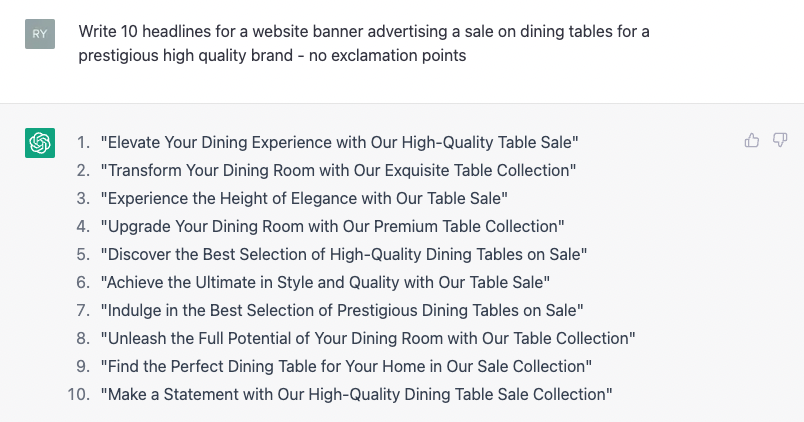
While the seasoned copywriters amongst us would shorten these a little, this prompt produced a more suitable response, with emotive words and phrases such as indulge, elevate, transform, and “make a statement” providing excellent inspiration for workable headlines designed to grab people's attention.
Using ChatGPT For Social Media
All brands know the importance of keeping their social media feeds fresh. Posting regularly and often drives engagement with your audience, and helps you build an even greater following.
If you’re not in a position to employ a full-time Social Media Manager, it can be hard to generate the content needed to sustain a frequent social media presence. Fortunately, ChatGPT can help with this too.
Imagine you oversee a sustainable skincare brand. Let’s ask ChatGPT to write a new social post for us:

Cleanse, moisturise and wear a night cream? Hardly ground-breaking tips in the skincare world. Here, offering a simple prompt with little context led to an equally simplistic output. The AI produced a painfully generic piece of copy, one with obvious skincare tips that could apply to pretty much any skincare brand.
Giving the chatbot more context helps it assume its imaginary new Social Media Manager role. Here's what happened when we got specific:

While still not perfect, this is a much better response, and the perfect foundation, pardon the pun, for a genuine social post designed to drive engagement, with relevant hashtags to boot. And of course, like all good Social Media Managers, ChatGPT has great taste in emojis.
ChatGPT’s horizons go far beyond skincare. Our chatbot Social Media Manager now also works for an innovative bath bomb brand, and they’re just about to release an all-new chocolate scented bath bomb:

A nice starting point for sure, but just like previous examples, it lacks flair and creativity, following a predictable structure that doesn’t do much to captivate the reader.
Tone is everything. Just like any competent writer knows, a particular tone of voice can change everything about a piece of writing. Your brand will certainly have its own tone of voice too, and identifying this is key to encouraging ChatGPT to produce a more effective social post.
In our rewritten prompt, we’re clear about the tone of voice (trendy) and as we know our imaginary brand loves using a pun or two, we make sure to get that into our prompt too:
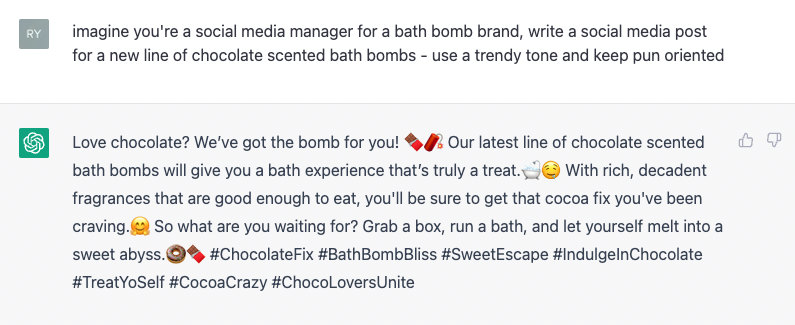
Now that’s more like it. Loaded with plenty of wordplay, and a good dose of choc-tastic puns. It is a little on the long side though, with short and snappy being the aim of the game with social posts. So what if we just asked it to shorten it for us?

Like a submissive little chatbot, it did exactly as we told it to, and in doing so produced a much tighter, more focused piece of copy. While we don’t recommend posting any of these examples untouched, they all act as great inspiration for an effective social post.
Even though ChatGPT may not produce perfect copy from a single prompt, by continually tweaking your requests, you'll get a variety of ideas that can be used as an excellent template for the finished product. Its suggestions are comparable to what you may have come up with after 30 minutes of brainstorming, but in a fraction of that time.
Using ChatGPT To Create Blog Content
ChatGPT is a valuable tool when it comes to creating outlines for blog posts. However, if asked to write a complete blog post from scratch, you’ll find the results lacking. ChatGPT's output tends to be formulaic and lacking in creative flair, resulting in simple essays that follow a predictable structure. It's also important to note that ChatGPT doesn’t have its own opinions or emotions, and is simply producing content based on the prompt given.
Here we asked ChatGPT to produce a blog post about redecorating for spring:

Formulaic, indeed, but still quite impressive for a computer. A human writer could take something like this as a starting point, and infuse it with their own perspectives, brand style and more references to real-world examples, bringing it to life.
Perhaps more useful then, would be a straightforward blog outline to help get you started in writing your own piece:
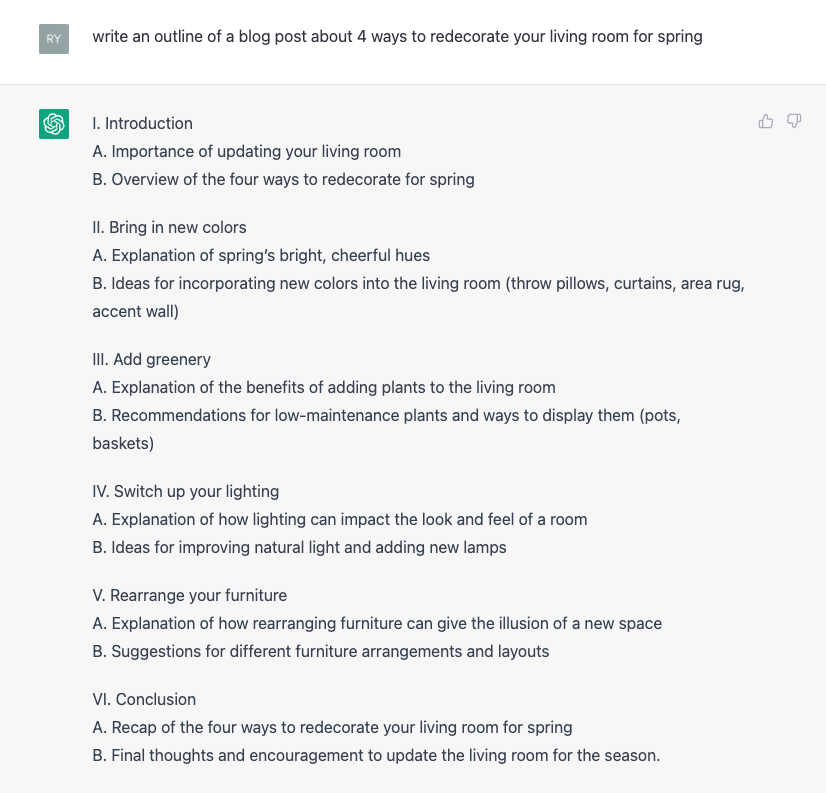
With a clear, logical structure laid out, in this example, ChatGPT could save you 30 minutes of planning, and even more procrastination time, and act as the starting point for a great blog post.
The Humans Certainly Aren’t Doomed
One thing’s for sure, while AI is impressive, the human touch is still vital for creating quality content. While ChatGPT is a powerful tool that can be helpful in generating content for your brand, it’s important to understand its strengths and limitations.
ChatGPT excels at summarising text, generating ideas for headlines, and creating outlines for blog posts. However, it isn’t able to write high-quality content on its own, as it lacks the creative flair and emotional depth that only the human brain possesses. But, by working with ChatGPT and providing it with clear prompts, specific context, and relevant keywords, you can get the most out of this tool to create summaries, outlines, inspiration and variations of content in a fraction of the time it’d take without it.
Much like word processing was faster than the typewriter, and the typewriter more efficient than pen and paper, ChatGPT is yet another tool designed to help us be more productive, and creative. Time to get prompt writing.




